A sister exhibition to Fashion Hacked at the Het Nieuwe Instituut in Rotterdam, Fashion Data is a stark reality check about the consumption of clothing and its societal meaning both in the West and East, along with the environmental implications for the planet.
![2016-04-05-1459844193-3691274-tmm_fashion_data_3_foto_johannes_schwartz.jpg]()
![2016-04-05-1459844220-8671346-tmm_fashion_data_4_foto_johannes_schwartz.jpg]()
Images: Johannes Schwartz
Fashion Data incorporates Fashion Machine: an installation by Conny Groenewegen in which she slashes and re-works a typical leftover product of the fast fashion/clothing industry, the fleece sweater. Conny and her team of students cut up and 're-spun' the fleeces onto giant spools and looped them onto huge looms' to demonstrate the scale of waste and the banality of the fleece jumper, which is largely undesired as a second-hand product and regularly finds its way into mattresses at the end of its lifecycle, or worse still, landfill. Conny makes thought-provoking statements about the role of designers in mass manufacturing for fast fashion, summed up in the set of stills below, followed by a film documenting the creation of the Fashion Machine installation.
![2016-04-05-1459840101-279784-ScreenShot20160404at13.13.34.png]()
![2016-04-05-1459840205-9731719-ScreenShot20160404at13.14.12.png]()
![2016-04-05-1459840251-8495929-ScreenShot20160404at13.19.06.png]()
![2016-04-05-1459840300-6199-ScreenShot20160404at13.14.46.png]()
To view Conny Groenewegen's fashion and knitwear design process in depth, watch this video.
In the film, note the polyethylene (PET) water bottles in the background, from which fleece jumpers have historically been made. The recycling of PET bottles into polyester fabric to create fleeces is fascinating. See the full process here.
Balancing Groenewegen's physical representation of waste is Fashion Data - a series of black and white (visually and metaphorically) statistics that give a context to the current European habits of purchasing, wearing and disposing of clothing. I'll let the numbers do the talking.
![2016-04-05-1459840606-8581483-ScreenShot20160404at13.26.55.png]()
![2016-04-05-1459840683-8288191-ScreenShot20160404at13.27.49.png]()
![2016-04-05-1459844613-6811970-ScreenShot20160404at13.28.26.png]()
![2016-04-05-1459844647-9485543-ScreenShot20160404at13.28.59.png]()
![2016-04-05-1459844681-230169-ScreenShot20160404at13.29.36.png]()
The exhibition was curated by fashion historian José Teunissen. Her publication Fashion Data is available to read online and fleshes out the numbers stated above. It's essential reading and explains the historic foundation of Fast Fashion, its environmental impact and the emerging slow fashion movement. It is also a useful visual summary of the Fashion Data exhibition that's as good as viewing it first hand. To paraphrase Teunissen, 30% of today's clothing is sold at the recommended retail price, another 30% disappears in the sales and 40% remains unsold or doesn't even reach the shops. This is the deadstock I spoke of in my previous post Fashion Hacked. Today's overproduction of Fast Fashion produces an enormous amount of waste with negative social and environmental impacts. There are solutions being developed to make materials production cleaner and more sustainable, but the business of, and appetite for, Fast Fashion remain strong.
Fashion Data also alerted me to the work of Dutch fashion brand Youasme (womens) Measyou (mens), which launched in 2010 as the world's first crowdfunded fashion brand creating slow fashion collections of high quality made-to-last knitwear and accessories.
![2016-04-05-1459844779-5467235-youasme_measyou_pilgrimage_photo_j.w._kaldenbach.jpg]()
Image: J.W. Kaldenbach
![2016-04-05-1459844843-2024958-ScreenShot20160404at10.00.23.png]()
![2016-04-05-1459844896-5200545-ScreenShot20160404at10.00.44.png]()
![2016-04-05-1459844941-9684911-ScreenShot20160404at10.01.04.png]()
An understated androgynous collage - Youasme Measyou AW14 collection. Images: Blommers/Schumm. Styling: Maarten Spruyt
![2016-04-05-1459845000-8282889-20140510004311angelique.jpg]()
On a stylistic level I was also struck by the natural ease of Youasme/Measyou's androgyny - it feels tangible and forever. This is in stark contrast with the overt androgyny expressed by some current fashion designers, including JW Anderson, whose work feels firmly 'of the moment' and deliberately provocative - more a scream of gender bending than a quiet dissolving of the aesthetic gender divide. No doubt both have merit and power for different reasons but it strikes me that Youasme's expression feels more real; more authentic. Herein lies the ever fascinating aspect of fashion's aesthetic debate - its subjectivity.
In addition to Youasme, a host of Dutch designers are utilising sustainable materials and practices, highlighted in conjunction with Fashion Data at Het Nieuwe Instituut's Temporary Fashion Exhibition. Here's a roundup.
![2016-04-05-1459845042-7746596-paulin1.jpg]()
Pauline Van Dongen's washable, wearable solar panel knitted shirt. Image: Liselotte Fleur
The parting insight delivered by Fashion Data comes in the form of award winning film Unravelhttp://www.unravelfilm.com/ by Meghna Gupta. Shot in India, the film illustrates the end point of clothing from the West that is sent for recycling and reveals the gaping divide between East and West and the perceived value of clothing.
The film runs deep into value judgements about society as a whole. It is shocking and revelatory. Some Indian factory workers assume that clothes being bought from stores like Primark are very expensive, meaning that western consumers are very wealthy and can afford to simply give away their clothes for recycling and buy new ones. They also draw the conclusion that Western women are more worthy and beautiful compared to Eastern women because of this excessive consumption. One female factory worker ponders, while removing decorative crystals from underwear, what the wearer must have done to deserve such a fate - stones on her underwear?! She concluded the woman must have been forced to wear it as some form of punishment for bad behaviour. Her comment is a stark reminder of a practical and functional attitude towards clothing, and of patriarchal dominance.
The full length film can be viewed here. It is a profound and perspective-inducing film that is equally compelling and educational. Further clothing recycling information is available here. For information about the sustainable fashion effort in the UK, click here.
Originally published on Techstyler.fashion
Follow me on Instagram @techstyler
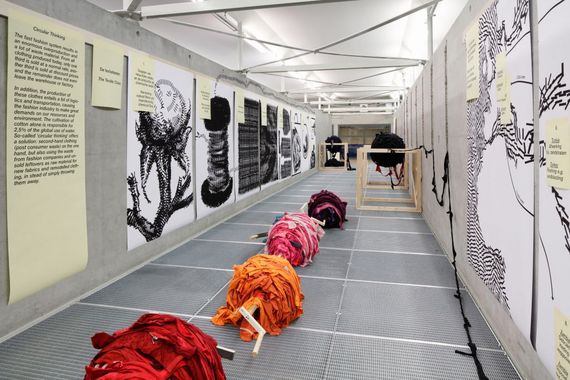
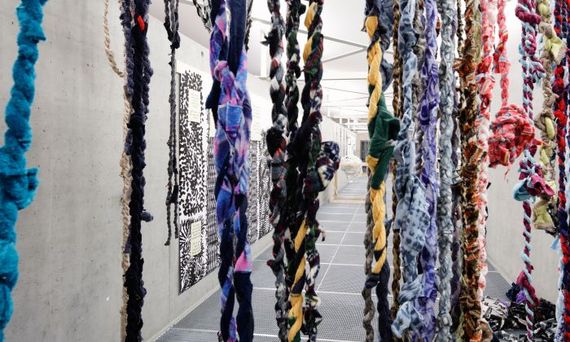
Fashion Data incorporates Fashion Machine: an installation by Conny Groenewegen in which she slashes and re-works a typical leftover product of the fast fashion/clothing industry, the fleece sweater. Conny and her team of students cut up and 're-spun' the fleeces onto giant spools and looped them onto huge looms' to demonstrate the scale of waste and the banality of the fleece jumper, which is largely undesired as a second-hand product and regularly finds its way into mattresses at the end of its lifecycle, or worse still, landfill. Conny makes thought-provoking statements about the role of designers in mass manufacturing for fast fashion, summed up in the set of stills below, followed by a film documenting the creation of the Fashion Machine installation.
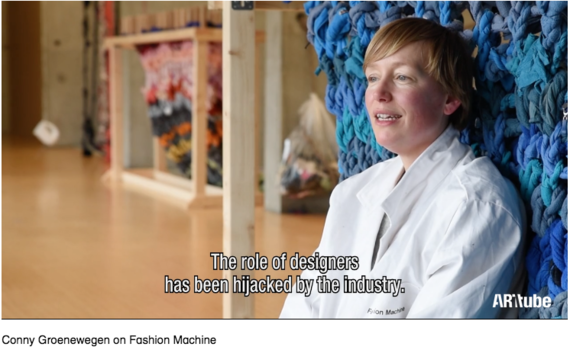
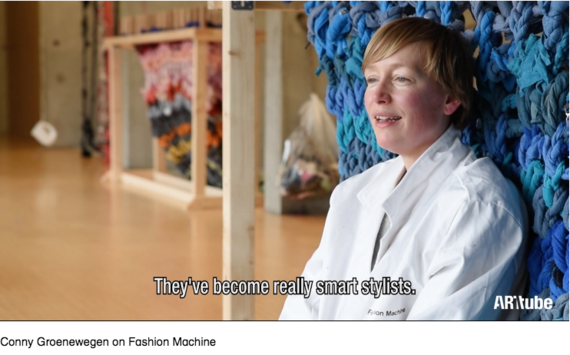
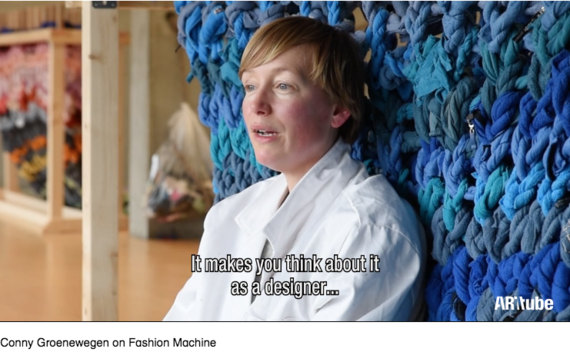
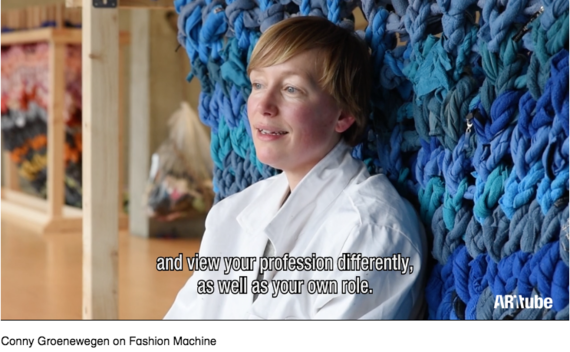
To view Conny Groenewegen's fashion and knitwear design process in depth, watch this video.
Cut The Crap from Het Nieuwe Instituut on Vimeo.
In the film, note the polyethylene (PET) water bottles in the background, from which fleece jumpers have historically been made. The recycling of PET bottles into polyester fabric to create fleeces is fascinating. See the full process here.
Balancing Groenewegen's physical representation of waste is Fashion Data - a series of black and white (visually and metaphorically) statistics that give a context to the current European habits of purchasing, wearing and disposing of clothing. I'll let the numbers do the talking.
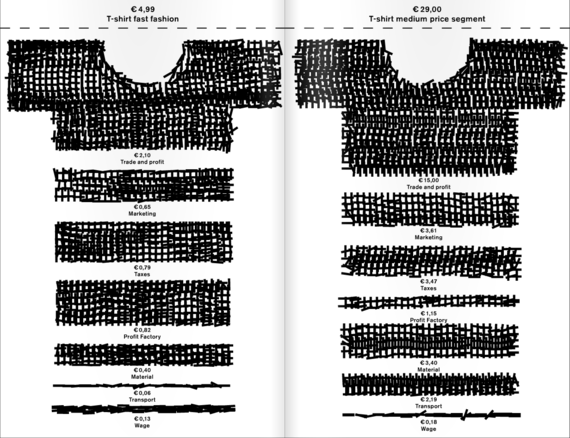

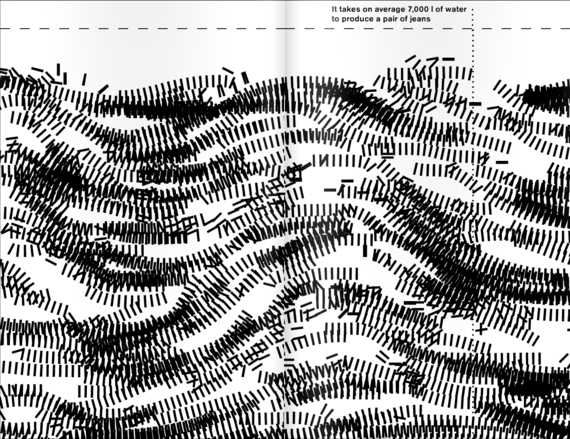
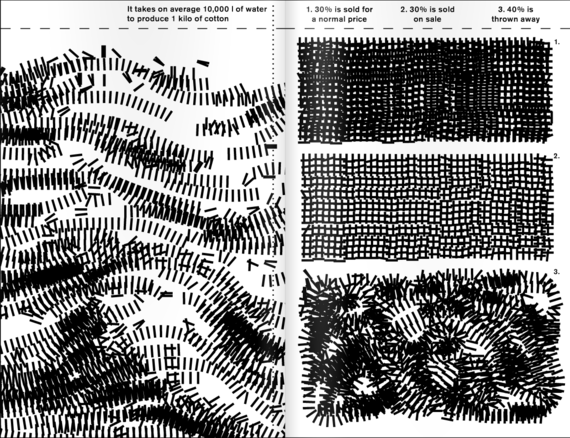
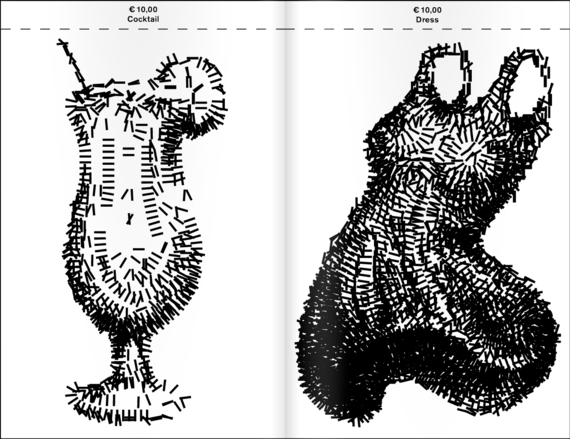
The exhibition was curated by fashion historian José Teunissen. Her publication Fashion Data is available to read online and fleshes out the numbers stated above. It's essential reading and explains the historic foundation of Fast Fashion, its environmental impact and the emerging slow fashion movement. It is also a useful visual summary of the Fashion Data exhibition that's as good as viewing it first hand. To paraphrase Teunissen, 30% of today's clothing is sold at the recommended retail price, another 30% disappears in the sales and 40% remains unsold or doesn't even reach the shops. This is the deadstock I spoke of in my previous post Fashion Hacked. Today's overproduction of Fast Fashion produces an enormous amount of waste with negative social and environmental impacts. There are solutions being developed to make materials production cleaner and more sustainable, but the business of, and appetite for, Fast Fashion remain strong.
Fashion Data also alerted me to the work of Dutch fashion brand Youasme (womens) Measyou (mens), which launched in 2010 as the world's first crowdfunded fashion brand creating slow fashion collections of high quality made-to-last knitwear and accessories.
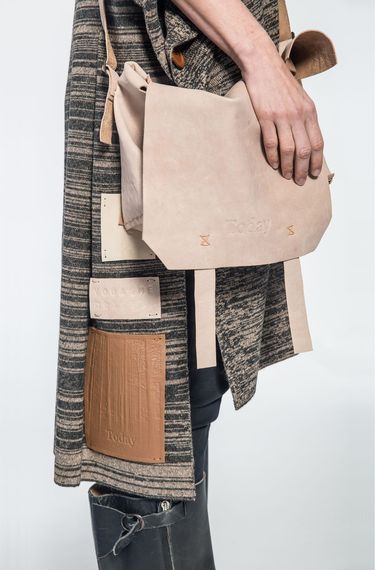
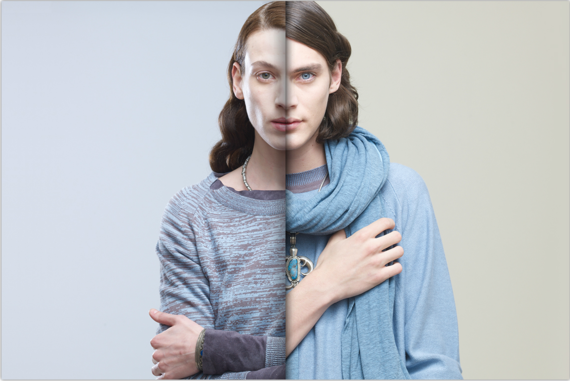
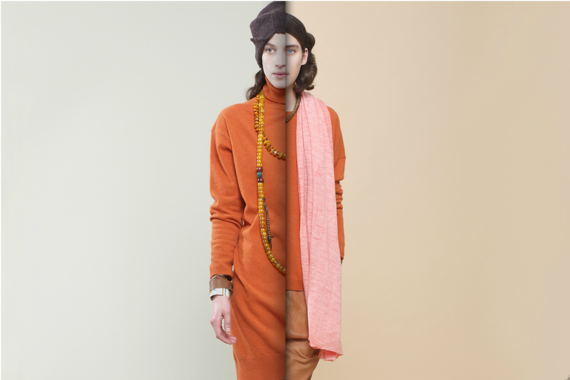
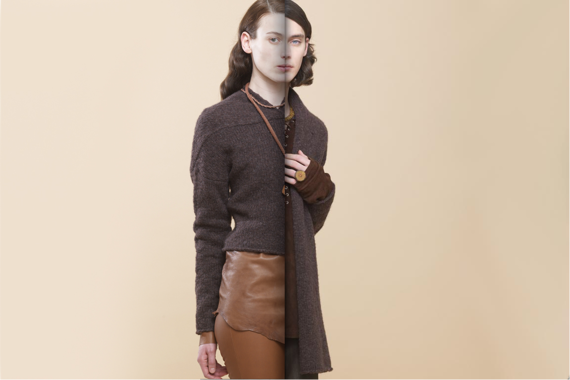
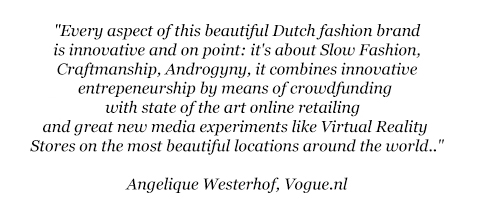
On a stylistic level I was also struck by the natural ease of Youasme/Measyou's androgyny - it feels tangible and forever. This is in stark contrast with the overt androgyny expressed by some current fashion designers, including JW Anderson, whose work feels firmly 'of the moment' and deliberately provocative - more a scream of gender bending than a quiet dissolving of the aesthetic gender divide. No doubt both have merit and power for different reasons but it strikes me that Youasme's expression feels more real; more authentic. Herein lies the ever fascinating aspect of fashion's aesthetic debate - its subjectivity.
In addition to Youasme, a host of Dutch designers are utilising sustainable materials and practices, highlighted in conjunction with Fashion Data at Het Nieuwe Instituut's Temporary Fashion Exhibition. Here's a roundup.

The parting insight delivered by Fashion Data comes in the form of award winning film Unravelhttp://www.unravelfilm.com/ by Meghna Gupta. Shot in India, the film illustrates the end point of clothing from the West that is sent for recycling and reveals the gaping divide between East and West and the perceived value of clothing.
The film runs deep into value judgements about society as a whole. It is shocking and revelatory. Some Indian factory workers assume that clothes being bought from stores like Primark are very expensive, meaning that western consumers are very wealthy and can afford to simply give away their clothes for recycling and buy new ones. They also draw the conclusion that Western women are more worthy and beautiful compared to Eastern women because of this excessive consumption. One female factory worker ponders, while removing decorative crystals from underwear, what the wearer must have done to deserve such a fate - stones on her underwear?! She concluded the woman must have been forced to wear it as some form of punishment for bad behaviour. Her comment is a stark reminder of a practical and functional attitude towards clothing, and of patriarchal dominance.
Unravel - Trailer from Soul Rebel Films on Vimeo.
The full length film can be viewed here. It is a profound and perspective-inducing film that is equally compelling and educational. Further clothing recycling information is available here. For information about the sustainable fashion effort in the UK, click here.
Originally published on Techstyler.fashion
Follow me on Instagram @techstyler